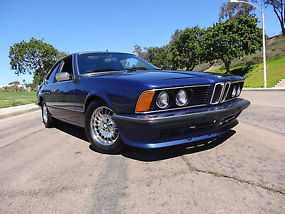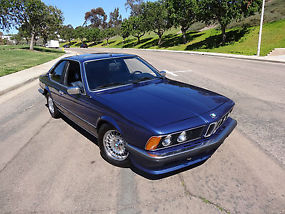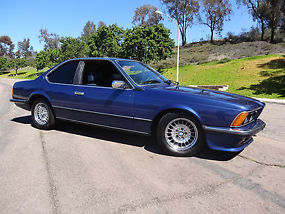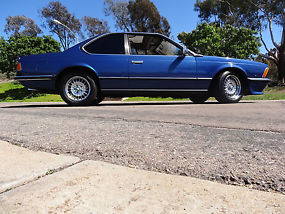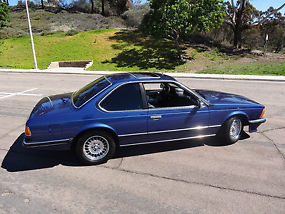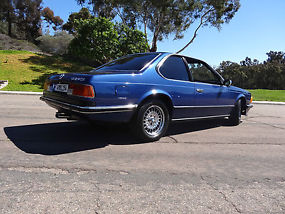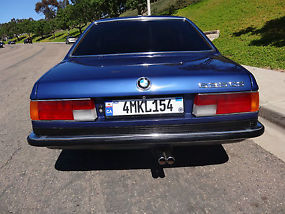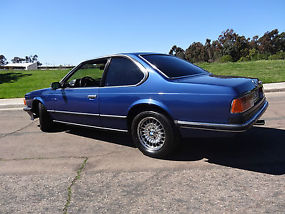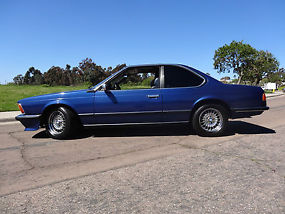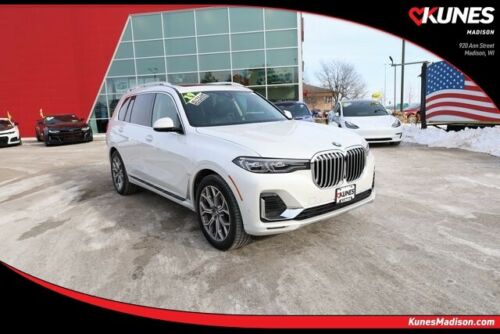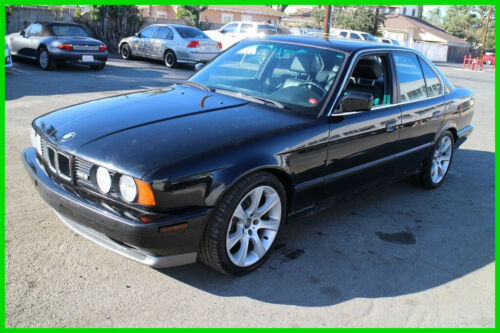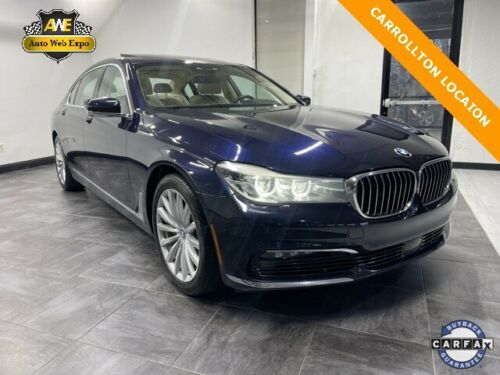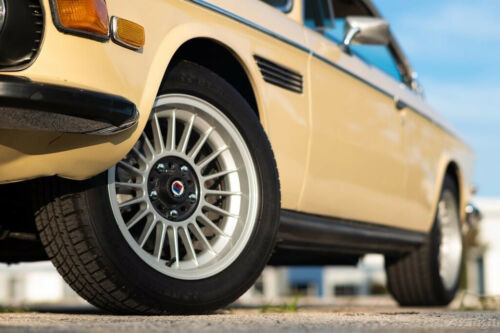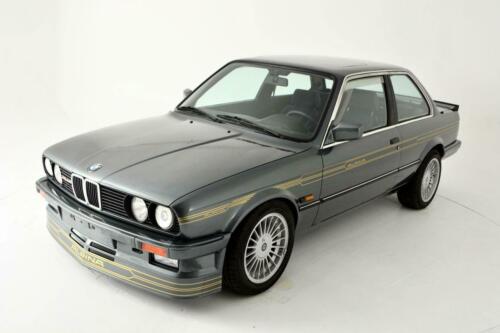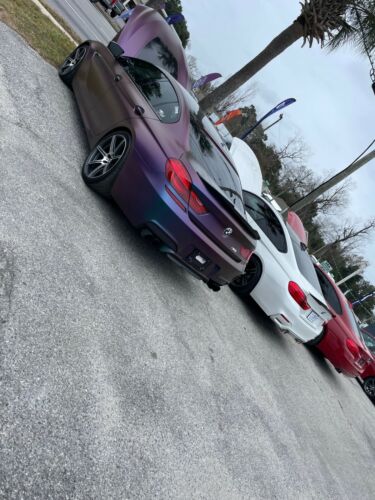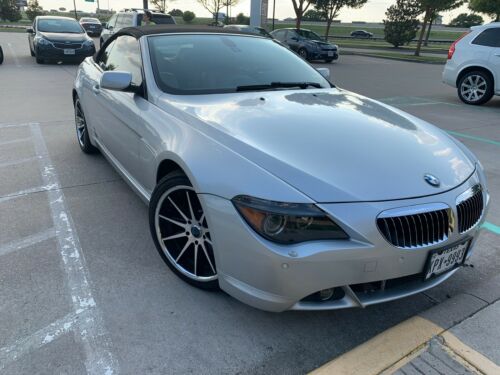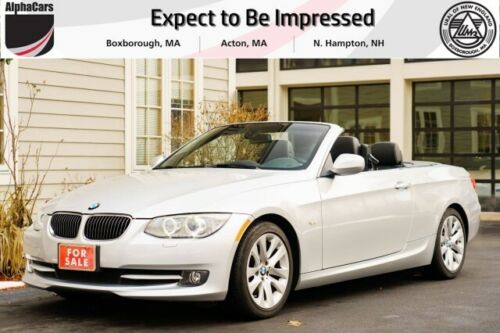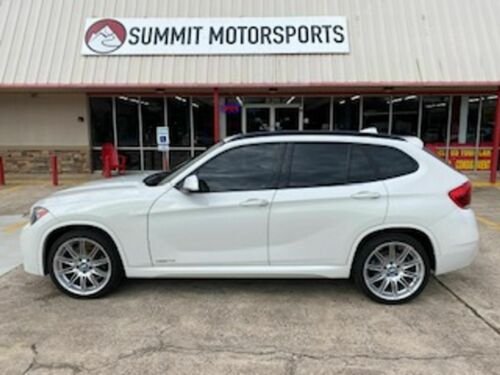1982 BMW 633CSI EURO
Sale price: $2000,00
make an offer
Technical specifications
| Manufacturer: | BMW |
| Model: | 6-Series |
| Year: | 1982 |
| Type: | Coupe |
| Fuel Type: | Gasoline |
| Color: | Blue |
| Mileage: | 216,675 |
| Transmission: | Manual |
| Interior Color: | Blue |
| Engine: | 6 Cylender 3.2l |
| Trim: | 2Door |
| Number of Cylinders: | 6 |
| Got questions? | Ask the Seller |
Current customer rating:
 ()
()
based on 9 votes
based on 9 votes
Photos
Description
1982 BMW 633csi Coupe EURO
1982 BMW 633csi Coupe, also known as "The Shark". This is a Rare 5 speed Coupe with 216,000original miles! One Owner vehicle in excellent shape! It is absolutelyoriginal and beautifully maintained ! Thiscar is a must see, a real head turner! The 6 Cylinder engine gives goodperformance ! The sports tuned suspension hugs theroad like nobody's business. Original Euro Bumpers. Original SapphireBlue Paint exterior in excellent shape, you are going to have a hardtime finding one like this. The Blue Leather interior of thisride is in very good Condition and is a sign of the excellent careand attention that this vehicle has seen since it was new. The matchingBlue Carpet shows like new as well. Recently serviced, everything underthe hood is in perfect shape.
Thetop of the line luxury package will completely surround you in bothcomfort and class. The package includes: 6 Cylinder, 5 Speed ManualTransmission, Rear 2 wheel drive,new tires, Power locks, power windows. AC blows cold, Rear window defroster, AM /FM, Cd Player,
Don't miss this opportunity to own a True Euro 633csi, One Owner BMW!
Please feel free to contact me directly with any questions (858) 733 1030
David
HISTORY
Ifthere were only one BMW model epitomizing the perfect blend ofluxury, sportiness and serious driving pleasure, for many enthusiasts itis the E24 6 Series. It had 12 years of production glory, from 1977 to1989 (U.S.), and its design was imitated by many others but neverequaled--not even by BMW. Diehard 6er owners often refuse to buy newermodels, instead pouring thousands into mechanical and cosmetic work tokeep the big coupes cruising.
1980-84: 633csi
Thesignificant revisions BMW brought to the E24 for the 1980 model wereall overshadowed by the wonders of Robert Bosch innovations. UsingBosch's ingenious new invention, the oxygen sensor, allowed efficientuse of a three-way catalytic converter. The positively horrible anduniversally hated thermal reactor and EGR emissions control systems weredispensed with at once in favor of this new technology. A new factoryelectronic ignition system also appeared. The darkest chapter inU.S.-spec BMW engine history was finally at an end. Whileactual power output remained the same, driveability was immeasurablyimproved. More importantly, but unbeknownst to us at the time,electronic engine management systems would eventually allow U.S-spec BMWengines to achieve nearly the same power output as rest-of-the-worldvariants. It would take nearly 10 years, but the course was set in 1980.In 1983-84, Bosch Motronic engine management quietly entered our liveswith Motronic version 1.0 basic. Ignition timing and fuel mixture werenow computer-controlled. Thisearly Motronic system, wonderful as it was at the time, is less thandesirable today from a performance-tuning standpoint. No chips areavailable to upgrade the ECU--what you have is what you have. Eventhough the engines will still respond well to high-compression pistonsand camshaft upgrades, electronic optimization is not possible.Similarly, while the catalytic converter is far preferable to thedreaded thermal reactor (writer looks down, spits), the exhaust systemon these pre-1985 Motronic cars is incredibly restrictive forward of thecat. The end result was lots of header installations and de-cattingprior to that becoming bad juju, and later, installation of 3.5-literengines with advanced Motronics.
Afive-speed manual gearbox backed up the newly invigorated engine, but,contrary to popular close-ratio European fashion, fifth gear wasoverdriven to reduce engine speeds at cruising velocities. This allowedboth increased fuel economy and use of lower (numerically higher)differential ratios to aid acceleration. Traditionally, BMW gears downcars when it wants to spiff up low-end zoot either as a result of enginesize, automatic transmission or, in this case, emission controls. Theautomatic transmission option included cruise control starting in 1982.
Outside,the lower front valence panel was revised, and the rear bumper endswere extended to the wheel openings in 1982. A silly federal lawmandated an 85-mph speedometer, and BMW stuck a red LED clock in it forsome reason. Independent techs sometimes played speedometer baseball outbehind the shop with these units, as owners just couldn't stand to lookat them. By 1984, we were back to the 140-mph speedometer. Centrallocking appeared; it was now possible to lock both doors and the trunkwith one turn of the key at the driver's door. But the little flapcovering that driver's-side door lock would wear out, and you had toreplace the entire cylinder--a problem never solved on the E24.
The1982 model year saw a mid-production suspension revision to the nowfamiliar wishbone front control arm design, which eliminated the frontstrut rods. No outward indications signaled this revolutionaryadvancement in BMW front suspension design. The wishbone design allowedfar greater high-speed stability through increased control of casterangles and afforded greater control over ride quality independent ofshock damping qualities. Suspension geometry under heavy cornering loadswas also improved. However, the wishbone design is not a panacea, astechnicians and do-it-yourselfers are well aware. The 06/82 productiondate marks both the beginning of the BMW wishbone control arm design andthe beginning of the now-notorious BMW front-end vibration proclivities(previous vibration problems with the E21 3 Series were isolated tothat model, which did not use wishbone control arms).
Also published at eBay.com
